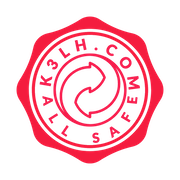Movement: The Key to a Healthy Life
Do you often feel lethargic, tired, and unmotivated to do anything? Are you experiencing pain and discomfort in your body? If yes, then it’s time to move! Movement is the key to a healthy life, and it’s essential for your overall well-being.
Movement is an essential part of life, and it’s something that we do every day. From walking to running, swimming to cycling, and even dancing, movement is an integral part of our lives. It’s not just about physical activity; it’s also about mental and emotional health. Movement can help reduce stress, anxiety, and depression, improve your mood, and boost confidence.
In this blog post, we will discuss the importance of movement, its benefits, and how you can incorporate it into your daily routine. We will also provide you with some tips and tutorials to help you get started.
What is Movement?
Movement is the act of changing position, posture, or location. It involves the use of muscles, joints, and bones to create motion. Movement can be intentional or unintentional and can be done in a variety of ways.
Why is Movement Important?
Movement is essential for maintaining good health. It helps to keep your body functioning correctly, improves your cardiovascular health, strengthens your bones and muscles, and can help prevent chronic diseases such as diabetes, obesity, and heart disease.
Regular movement also helps to improve your mental health by reducing stress, anxiety, and depression. It helps to boost your mood, increase cognitive function, and improve sleep quality.
Facts About Movement
– According to the World Health Organization, adults should engage in at least 150 minutes of moderate-intensity aerobic physical activity per week.
– Regular physical activity can reduce your risk of developing type 2 diabetes by up to 50%.
– Exercise has been shown to be as effective as medication in treating mild to moderate depression.
– Movement can help improve your posture, flexibility, and balance, reducing your risk of falls as you age.
Listicle: 5 Benefits of Movement
1. Improves Cardiovascular Health: Regular movement helps to improve your heart and lung function, reducing your risk of cardiovascular disease.
2. Reduces Stress and Anxiety: Exercise releases endorphins, which are natural mood boosters that can reduce stress and anxiety levels.
3. Helps with Weight Management: Movement can help you maintain a healthy weight, as it burns calories and builds muscle.
4. Enhances Cognitive Function: Exercise has been shown to improve memory, focus, and concentration, enhancing cognitive function.
5. Boosts Energy Levels: Regular movement can help increase energy levels, reducing fatigue and improving productivity.
Tutorial: How to Incorporate Movement into Your Daily Routine
1. Take the Stairs: Instead of taking the elevator, take the stairs. It’s an easy way to get your heart rate up and burn some calories.
2. Go for a Walk: Take a walk during your lunch break or after dinner. It’s a great way to get some fresh air and clear your mind.
3. Do Some Yoga: Incorporate some yoga poses into your daily routine. It’s a low-impact exercise that can help improve flexibility and reduce stress.
4. Dance it Out: Put on some music and dance around your living room. It’s a fun way to get your heart rate up and burn calories.
5. Try a New Sport: Join a local club or team and try a new sport. It’s a great way to meet new people and challenge yourself physically.
Tips: How to Stay Motivated
1. Find a workout buddy to keep you accountable and motivated.
2. Set realistic goals and track your progress.
3. Mix up your routine to prevent boredom and keep it interesting.
4. Reward yourself for achieving your goals.
5. Remember to listen to your body and take rest days when needed.
Question and Answer of Movement
1. Q: How much movement should I incorporate into my daily routine?
A: According to the World Health Organization, adults should engage in at least 150 minutes of moderate-intensity aerobic physical activity per week.
2. Q: Can movement help with chronic pain?
A: Yes, movement can help reduce chronic pain by strengthening muscles and joints, improving flexibility, and reducing inflammation.
3. Q: What are some low-impact exercises that I can do if I have joint pain?
A: Swimming, cycling, yoga, and walking are all low-impact exercises that can help reduce joint pain.
4. Q: Can movement help improve my sleep quality?
A: Yes, regular movement can help improve sleep quality by reducing stress and anxiety levels, releasing endorphins, and promoting relaxation.
Conclusion of Movement
In conclusion, movement is essential for living a healthy life. It’s not just about physical activity; it’s also about mental and emotional health. Regular movement can help improve cardiovascular health, reduce stress and anxiety, manage weight, enhance cognitive function, and boost energy levels. By incorporating movement into your daily routine, you can improve your overall well-being and lead a happier, healthier life.
Recommendations:
- Health Safety Posters Free Downloads Dse manual handling workplace noise slips and trips terrorism attack coshh environmental and waste management. New hse law poster from 2014 download free leaflets and pocket cards or buy the…
- Occupational Safety Logo Looking for free vectors of health and safety. The institution of occupational safety and health iosh is a british organisation for health and safety professionals. Occupational Safety And Health Logo…
- Free Health And Safety Law Poster Pdf Download Its the law what is the osha poster and why do i need it. That is why implementing safety programs and first aid awareness at the workplace is very important.…
- The Power of Movement: How Exercise Can Change Your Life Movement: The Key to a Healthy Lifestyle Movement is an essential aspect of a healthy lifestyle. It is the ability to move your body freely without any discomfort or pain.…
- National Safety Day Photos If you're looking for national safety day photos pictures information linked to the national safety day photos topic, you have come to the right blog. Our site frequently provides you…
- Safety Quotes Inspirational With this in mind we got to thinking about 7 of our personal favourite quotes about health and safety. And whatever your beliefs honor your creator not by passively waiting…
- Health And Safety At Work Poster Pdf The hse are providing businesses with free posters to download from the health and safety executives website. The health and safety law poster products tell workers what they and their…
- Safety Planning Intervention Template The safety planning intervention for suicide prevention is a free online course from the new york state office of mental health and columbia university designed for education and training of…
- Printable Safety Plan Worksheet Domestic violence safety plan template is often used in safety plan template plan template and business. Some of the worksheets displayed are safety plan work safety plan work appendix food…
- Safety Plan Worksheet No portion of the safety plan template may be reproduced. Displaying all worksheets related to safety plan. Safety Plan Worksheet Therapist Aid I can sometimes anticipate when i need to…
- Beach Safety Poster Ks1 Our free activities will help you inspire your pupils to discover a world of lifeboats volunteers action and courage. Weve put together a suite of teaching ideas and materials to…
- Workplace Health And Safety Signs Employers must provide safety signs if there is a possibilty of significant risk in the workplace. What safety signs does your workplace need. Safety Signage And Your Workplace Whs Consulting…
- Safety Plan Worksheet For Adults It is important that the safety plan worksheet is completed with the therapist and patient working together. 1 feeling safe being safe ety in an gency. Safety Plan Worksheet Therapist…
- Get PPE Easily with a PPE Vending Machine PPE Vending Machine. Personal Protective Equipment (PPE) is an essential component for the safety of many individuals. It provides the necessary protection to ensure that employees and individuals are safe…
- Health & Safety Pictures If you're searching for health & safety pictures pictures information connected with to the health & safety pictures topic, you have pay a visit to the ideal site. Our site…
- Inspirational Safety Quotes So we thought you might need some extra inspiration to turn to on a bad day. The use of silly and meaningless safety language matters it creates a distraction and…
- Health And Safety Inspection Report Template Use for office health and safety audits. Add a badge to your website or intranet so your workers can quickly find answers to their health and safety questions. Safety Report…
- Safety Harness Inspection Requirements Appendix a attached details the checklist for the inspection of harnesses lanyards and associated equipment as detailed in appendix c of asnzs18914 however the manufacturers user instruction manuals should be…
- Safety Plan Worksheet For Addiction It is important that the safety plan worksheet is completed with the therapist and patient working together. Psych and the organization carmha and simon fraser university see link welcome to…
- Safety Quotes Images A safety leader will go above and beyond to make safety a priorityfor themselves and for those around them. Safety images photos unsafe pictures and funny fails. Safety Doesn T…
- Poster On No Safety Know Pain Get a diploma in industrial safety from govt. No safety know pain know safety no pain. Safety Slogans No Safety Know Pain Know Safety No Pain Safety Know safety no…
- Safety Topics Slips Trips And Falls Slips trips and falls is the number 1 reason for an industrial injury in the united states. Preventing slips trips falls safety talk meeting outline follow up on any outstanding…
- Equestrian Safety Vest Consultants in all aspects of equestrian safety. Shop motorcycle air vests. Amazon Com Monkeyjack Equestrian Horse Riding Safety Vest We carry popular air vests like hit air and point two…
- Hazard And Risk Images If you're searching for hazard and risk images images information linked to the hazard and risk images keyword, you have come to the ideal site. Our site frequently gives you…
- Why Everyone Should Wear Goggles When Swimming Goggles Uses: A Comprehensive Guide for Everyone Are you a swimming enthusiast, a laboratory technician, or a construction worker? Do you constantly find yourself in situations where your eyes need…
- The Power of Movement: How Exercise Can Improve Your… Movement: The Key to a Healthy Life Are you feeling lethargic and unmotivated lately? Do you struggle with joint pains and muscle stiffness? If yes, then you are not alone.…
- Health And Safety Topics Occupational health safety is the industry leading news magazine enewsletter and website for occupational health and safety professionals focusing on problem solving solutions latest news. Health safety committee member health…
- The Power of Movement: How Exercise Impacts Your… Introduction Movement is a fundamental aspect of human life that we often take for granted. From walking and running to dancing and playing sports, movement enables us to express ourselves,…
- Food Safety Day Logo Practical realistic approaches to identify reduce risks threats allergens microbial contamination fraud vulnerabilities across the supply chain business utilising innovative scientific methods robust risk assessments technological advancements to protect consumer…
- Bicycle Safety Poster Ideas Produce a bicycle safety video or public service announcement through a local. Neighborhood adventures in bicycle safety striving to be a supercyclist. Make A National Bike Safety Month Poster Bike…
Advertisement
Scroll to Continue With Content




